Continued shifts in consumer behaviors and the workforce after the height of the pandemic are calling for your digital operations to play a more significant role in securing and strengthening revenue through the economic challenges anticipated in 2023.

Defining Digital Operations in Relation to Tech Trends
First, let’s agree on what "digital operations" means. Digital operations, or DigitalOps, isn’t just digital marketing, though that is a part of it. Digital operations is the entire connection between you, your customer, and potentials across all communication platforms. This includes digital marketing, digital sales, digital advocacy, and the tools used to support lead generation, sales conversion, and customer advocacy. The 14 elements of digital operations that you should know are:
- Automation
- Tech Stack Management
- CRM
- Data Hygiene
- Domain Management
- Chatbots
- User Experience & Interface
- Dashboards
- Tracking & Analytics
- Data Access
- Social Media Platforms
- Virtual & Augmented Reality
- Artificial Intelligence
- Website
All 14 elements of your digital operations are integrally connected and, like the spokes of a wheel, work best when balanced. Within them, trends ebb and flow—some disappear, some become more relevant, and new ones emerge.
Here are 7 trends that are important to keep your B2B company’s digital operations at their best in 2023.
1. Artificial Intelligence will do the heavy lifting in digital.
As companies continue dealing with talent constraints, the pressure is on the teams that support the digital journey, like marketing and sales, to do more with less. In some cases, digital operations has been expected to make up for missing talent, while some companies are leaning on digital operations to turn down business until the company can fulfill their commitments to a growing customer base.
That’s where AI comes in. Already, digital specialists are integrating software and apps driven by artificial intelligence into their workflow to reduce or replace any repetitive, time-consuming tasks throughout marketing and sales funnels.
Awareness efforts at the top of the funnel will be supported by AI content creation, like AI copywriting and image-generation software.
- Copywriters like Lately.ai, Jasper, Copy.ai, and Rytr can generate blogs, social posts, email sequences, and website copy. I often use Rytr to support my social content creation, and I used Copy.ai to help outline this blog.
- Tools like AdCreative.ai, Jasper Art, and other AI art and image generators can set your creativity apart in social feeds and other placements.
Touchpoints from inquiry to advocacy can be supported by AI communicators, like chatbots, powered by natural-language processing to improve customer experience and free up team capacity. We’ll discuss more on chatbots and the micro-moments they support later in this blog.
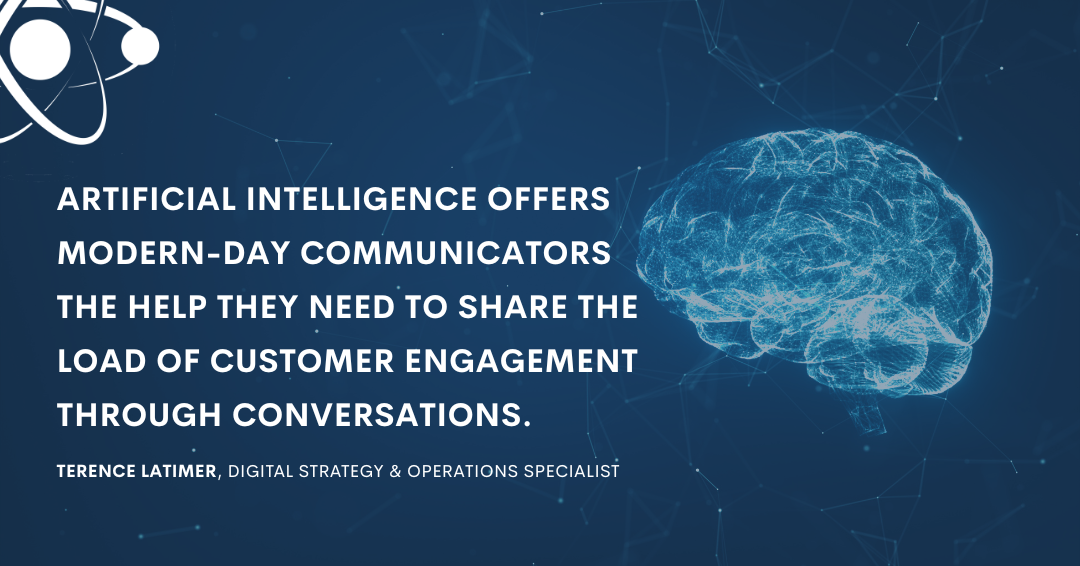
2. The future is bright and even more data-driven for digital front-runners.
Businesses of the future know digital efforts are nothing without data, and the leaders of those businesses combine customer insights with data analytics to meet customer expectations at scale and reduce the costs of wasted pursuits.
Every organization wants a better understanding of its audience — their expectations, needs, pain points, and behaviors (both online and offline). They also want fuller pipelines. But not every organization goes beyond “vanity metrics” like impressions and the number of CRM contacts for deep data-driven insights that allow teams to meet customer needs and generate customer advocacy while staying true to the brand values and delivering results.
It’s not enough to just have the data. To be data-driven means aligning KPIs across the entire digital footprint to the organization’s set strategic direction, revenue goals, and overall vision and mission.
With insight at the heart of everything we do in digital operations today—from building content strategies through launching new channels—we can expect more and deeper reporting and dashboard tools that make sense of all this information so you can make smarter decisions faster.

3. Companies focused on Total Experience will win in their markets.
Experience is king in every market now, thanks in large part to shifts in customer expectations and behaviors through the pandemic. Naturally, the focus has been on customer experience (CX) with many companies improving their digital presence and account-based approaches for better interactions with prospects and customers across more channels, but Experience isn’t just about your customers.
Now it’s time to think about your organization’s total experience (TX), which is the combination of your efforts across CX for improved customer advocacy and efforts across your employee experience (EX) for improved productivity, loyalty, and retention.
As you focus on creating seamless, engaging, and meaningful experiences for your customers and prospects, and consider how you might improve products, services, or environments to delightfully meet their needs and expectations, look for opportunities to do the same for employees and applicants. In both the customer and employee acquisition funnels, attention to experience at each step in their journey is sure to improve and increase your leads generated and converted, ultimately creating loyal, revenue-generating advocates internally and externally.
A uniquely delightful and memorable total experience will position your company as a forward-leaning market leader that can meet shifting expectations and behaviors with agility and set you apart from competitors—especially those boosting customer experience at the expense of employee experience.
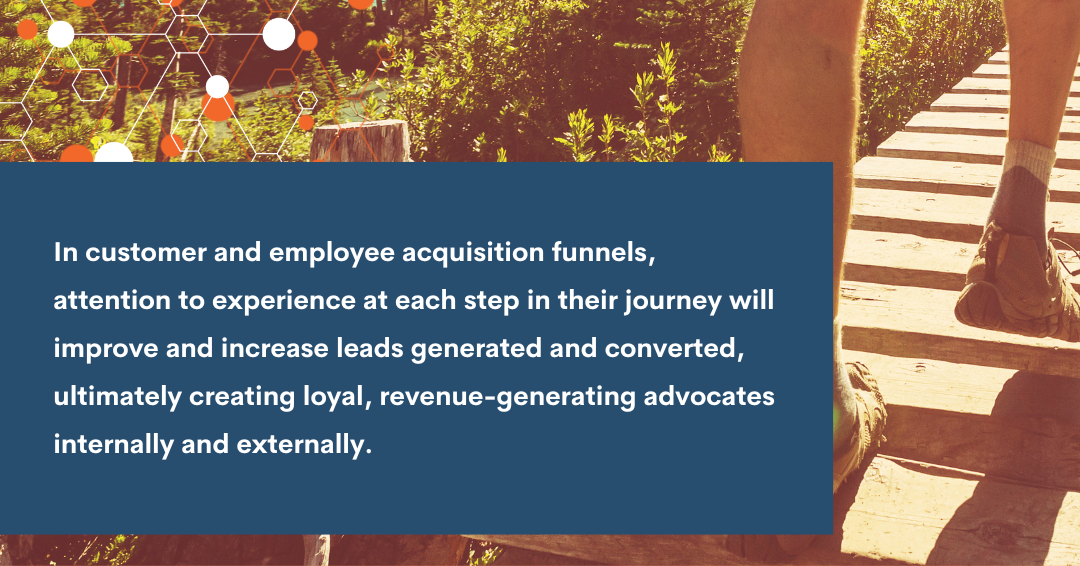
4. Micro-moments matter more than ever.
Not sure where to start optimizing your brand's total experience? Look first at micro-moments — those tiny windows of opportunity when people are looking for information or solutions that you have.
If you’re thinking to yourself, “Micro-moments are just a B2C concern,” you're missing out on opportunities to generate leads. Today’s technologically savvy B2B buyer has more options than ever before and is on a constant hunt for the best solution for their needs.
The primary challenge of your digital operations is to provide the right information, in the right format and tone, at the right time to meet the customer on their terms in the decision-making process. Micro-moments are your chance to answer inquiries and differentiate your brand in the market.
Anticipate buyer and existing customer needs, with
- Features and Specifications
- FAQs and How-Tos
- Case Studies and Use Cases
Then meet those needs with easily-accessible, mobile-friendly content:
- Video and Audio
- Social Posts
- Blogs
- Chatbots
Put yourself in your ideal customer’s shoes and consider the questions they might have and the micro-moment opportunities you can win.
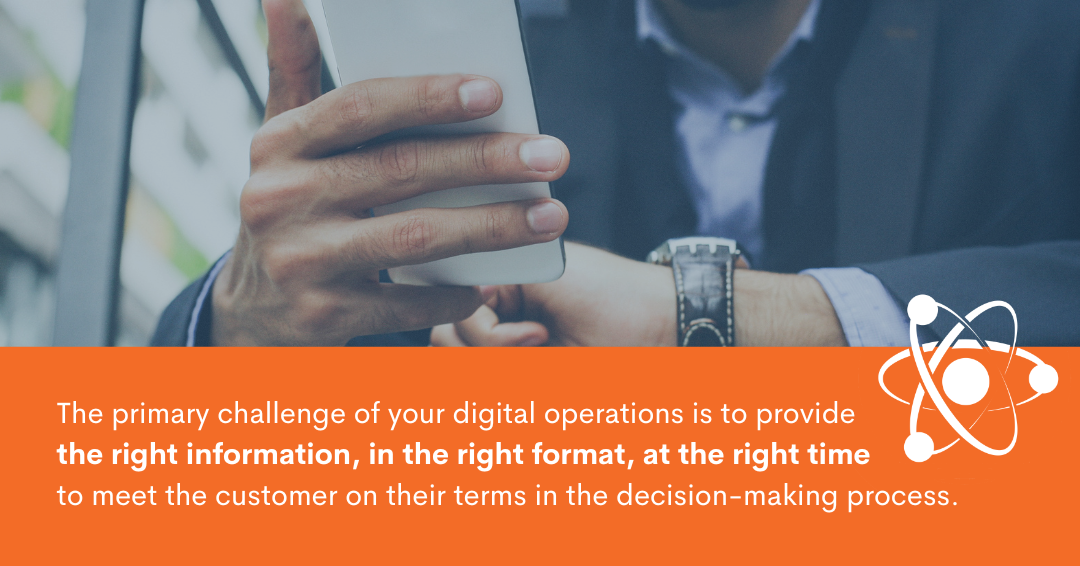
5. Chatbots are here to stay.
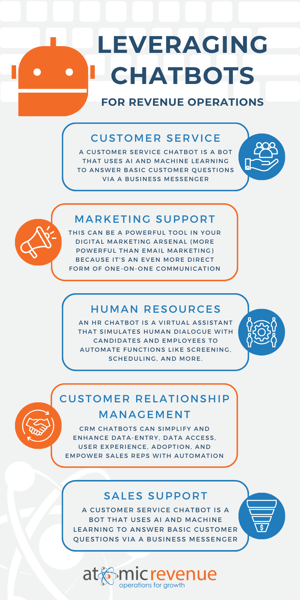 General skepticism about relying on tech at times we might usually want a person, like when we have questions about what we’re buying or need support after we’ve purchased, has kept chatbots from widespread adoption and acceptance in the digital journey —until now. Thanks to improved and accelerated methods of machine learning, the artificial intelligence capabilities of chatbots, such as natural language processing and speech and image recognition, can be leveraged to guide total experience and support business development.
General skepticism about relying on tech at times we might usually want a person, like when we have questions about what we’re buying or need support after we’ve purchased, has kept chatbots from widespread adoption and acceptance in the digital journey —until now. Thanks to improved and accelerated methods of machine learning, the artificial intelligence capabilities of chatbots, such as natural language processing and speech and image recognition, can be leveraged to guide total experience and support business development.
This year and after, chatbots will be valued beyond efficiency for their added value in the experience. They’ll meet prospects and customers in their micro-moments, with the right information at the right time; support marketing and sales teams by directly engaging and qualifying leads; and share the work of keeping existing customers engaged and on the path to advocacy. We can count on more chatbots supporting People Operations functions and improving employee and applicant experience with conversational AI processes for screening, interview scheduling, employee onboarding, engagement, feedback, reviews, etc.
We’re still on the surface of chatbots’ potential. If you’re considering the value chatbots can add to your digital operations and revenue operations as a whole, read more from my colleague Terence Latimer on Using Chatbots for Lead Generation to Enhance Revenue Operations.
6. Prioritizing zero-party data is a win-win.
Zero-party data is the data your customers provide to your company freely. It is as simple as asking your customers exactly what you want to know – little-to-no inferencing or analysis for answers that help you understand their needs and expectations. “Simple” becomes “successful” when you ask questions that matter to you and your customers and use that intentionally-shared information to exceed their expectations and improve their experience.
|
You win:
|
Your buyers win:
|
Personalization in the journey using information your customers willingly provide builds trust and allows customers to be a part of your brand and become your advocates. As customers engage further and enjoy their experience with your business they will feel the mutual benefit of sharing their information, resulting in zero-party data that can be used to understand and exceed expectations, inform individual digital journeys, and improve your offerings. So, how do you get it?
Find opportunities through awareness and inquiry stages to determine their pains and the best possible solutions.
- Chatbots, pop-ups, and forms to direct site traffic
- Drip campaigns and social polls to collect information about needs and preferences
After conversion, collect reviews and feedback on the buying (or hiring) process, products, service, and experience.
- An onboarding process
- Profile creation and completion
- Surveys
- Meetings
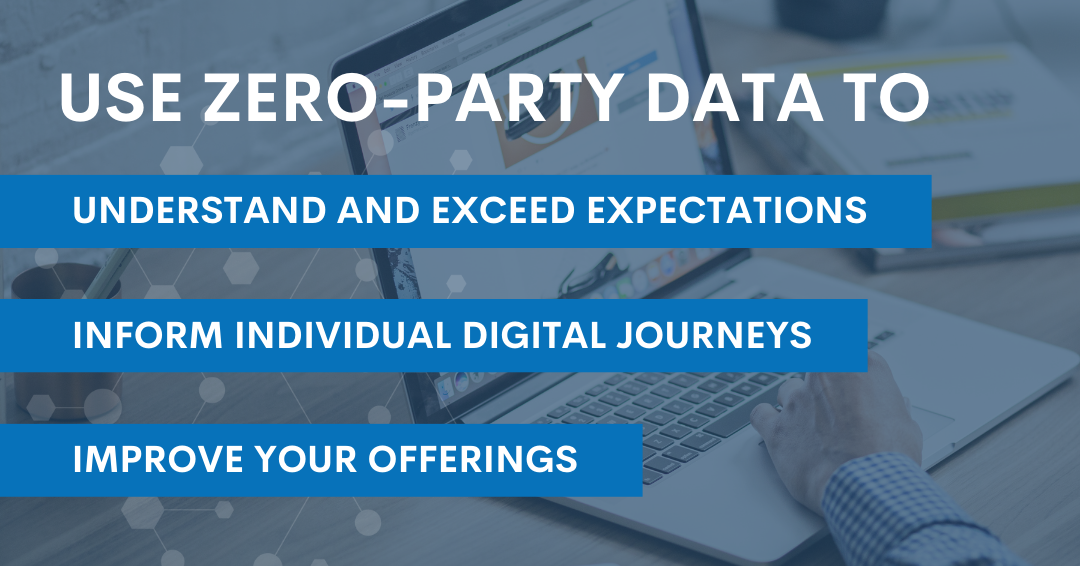
7. B2B influencer marketing will become the norm.
As a testament to the growing importance of micro-moments, social search is gaining momentum in B2B markets.
- According to LinkedIn, 75% of B2B buyers use social media to make buying decisions.
In content-crowded feeds, advocates and influencers stand out with more specific messages for niche audiences and deliver greater ROI, trust, and credibility than content marketing and traditional advertisements. With a growing focus on experience and personalization, customer advocates will emerge, making waves and generating leads with their influence.
- Nielsen reports 92% of digital consumers trust recommendations from within their digital network and that influencers drive 80% of brand recall after exposure.
- HubSpot reports 41% of executives invited an organization to submit a proposal after seeing thought leadership on social media
When considering B2B influencers, prioritize their expertise and values, credibility, and audience relevance, over audience size. Whenever possible, encourage and appreciate customer-generated content that amplifies the word-of-mouth effect and turns advocates into low-cost influencers.
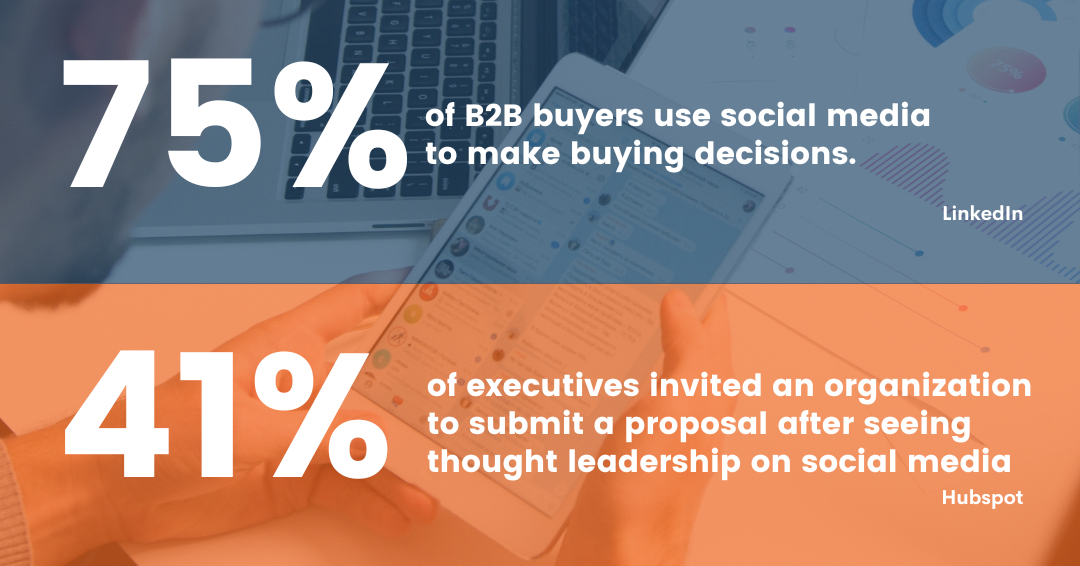
How To Make the Most of 2023 Digital Operations Trends for Revenue Growth
Start by assessing your digital operations as part of revenue operations. Do some of the 14 elements outweigh the others? Which elements are important to reach your goals for the year? Look for existing opportunities in your digital operations where these seven trends are aligned with your growth goals.
-
Artificial Intelligence will do the heavy lifting in digital.
-
The future is bright and even more data-driven for digital front-runners.
-
Companies focused on Total Experience will win in their markets.
-
Micro-moments matter more than ever.
-
Chatbots are here to stay.
-
Prioritizing zero-party data is a win-win.
-
B2B influencer marketing will become the norm.
If you intend to take advantage of these 2023 digital operations trends but you’re out of your comfort zone or not sure where to start, consider engaging digital marketing and digital operations specialists, like the subject matter experts (SMEs) at Atomic Revenue.
We can simplify the process and help you grow your B2B company's revenue with the right solutions that make the most sense for what you’re trying to achieve. Let us help! Contact our team today for a no-obligation conversation.
About the Author
As a Content Marketer, Kennedy Brown is an experience-focused marketing and design generalist optimizing buyer journeys with content strategy, copywriting, graphic and web design, organic and paid social media management, and email marketing.






